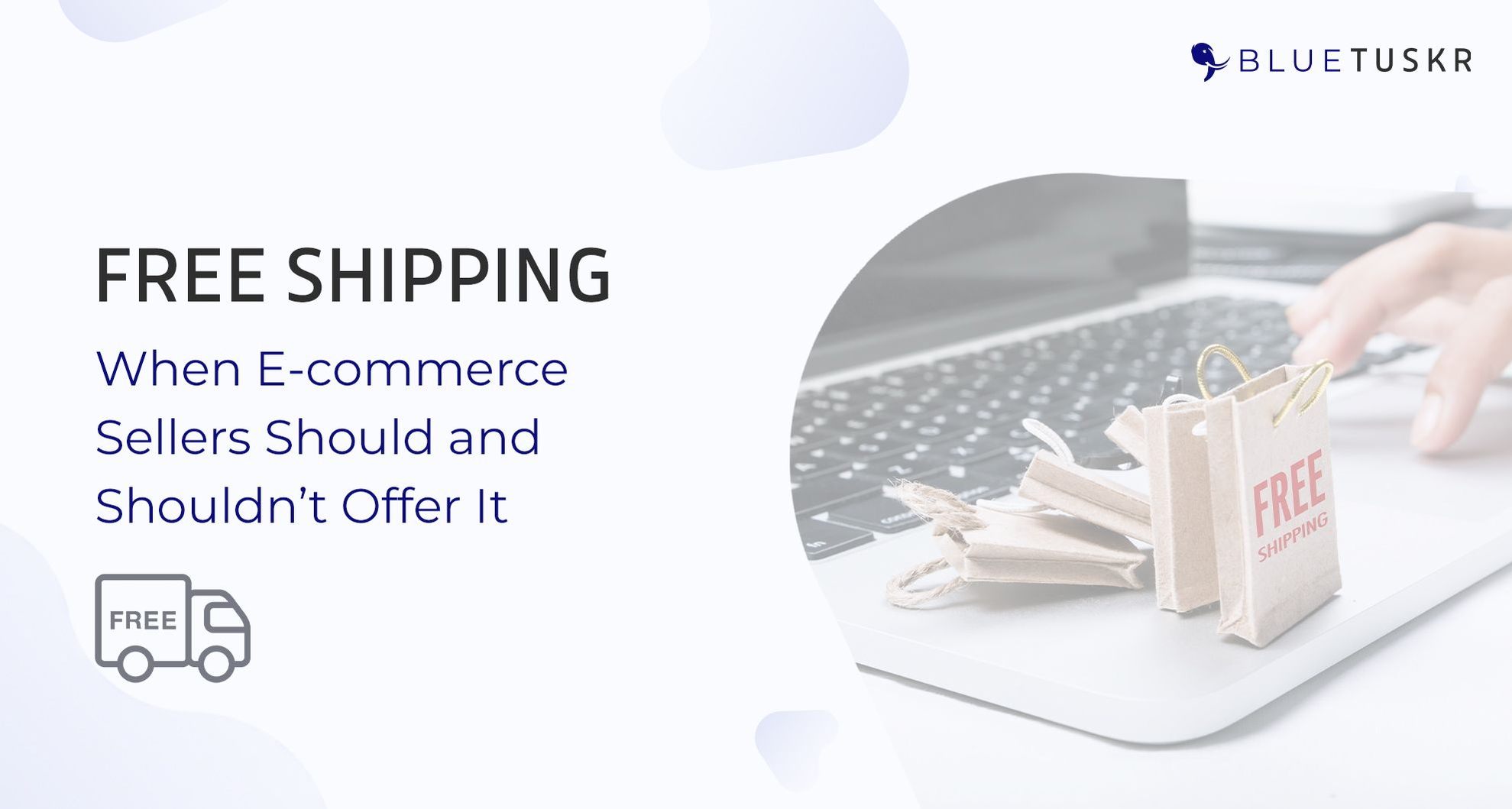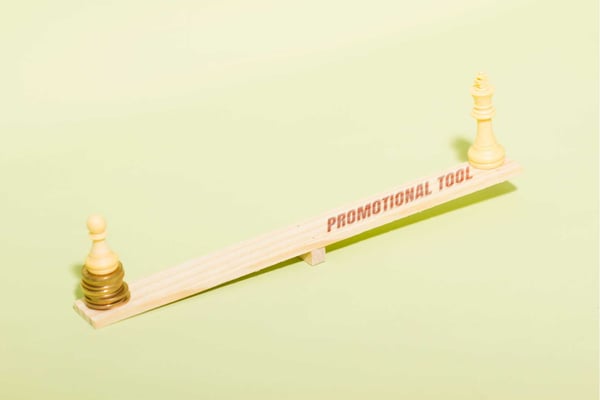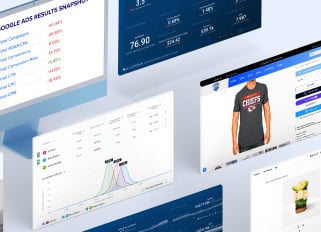
Free Shipping: When E-commerce Sellers Should and Shouldn’t Offer It - Updated 2023
Saying that Amazon has changed customer expectations is an understatement. The presence of Prime two-day free shipping – which launched in 2005 – fundamentally altered the e-commerce landscape. Originally, the e-commerce free shipping incentive was a differentiator. Today, it’s becoming a common approach leveraged by retail giants – including Walmart and Target – to entice shoppers to use their e-commerce platform.
In some cases, e-commerce sellers of all sizes might feel like they have little choice but to jump on the free shipping bandwagon. This question is, is e-commerce free shipping always the right choice? Are there times when e-commerce sellers should offer free shipping? Are there times they shouldn’t?
Figuring out when free shipping is a smart perk to offer isn’t easy, but it is possible to figure out. Before you choose, here’s what you need to consider.
The Power of E-commerce Free Shipping
It isn’t a secret that free shipping sets e-commerce sellers back. If you offer it, that means you’re going to shoulder that expense for the customer, and that can dig into your profits.
But offering free shipping has its benefits. When it comes to functional incentives, 90 percent of shoppers say free shopping encourages them to shop online more often. Plus, a shocking 93 percent of consumers will take action to qualify for a free shipping perk, including potentially putting more items in their carts.
Finally, the cost of shipping is a leading reason for cart abandonment. In fact, 86 percent of consumers have walked away from an e-commerce purchase because of shipping costs.
Now, that doesn’t mean you should automatically default to free shipping. There are instances where it makes sense, and times when it doesn’t. Here’s a look at situations where e-commerce free shipping should be on the table, and when you should skip it.
When E-commerce Free Shipping Should Be Offered By Sellers
There are plenty of reasons to offer free shipping to your customers. If you want to know whether it’s a smart move for you, see if any of these scenarios apply.

You Can Roll the Cost into the Price
One of the clearest times when offering free shipping makes sense is when you can roll the cost into the item price. For example, if you’re selling a $14 item that costs $5 to ship, if you can bump the item price up to $19 and still get at least the same number of sales, you aren’t making a bad choice. If the free shipping incentive attracts more buyers, then you’re boosting sales without losing a dime.
Whether this approach will work depends on your item's current pricing, how much competitors charge for similar products, and whether the competitor is charging for shipping. Ultimately, your price point has to be attractive to buyers. If rolling the shipping cost into the price causes sales to drop, it’s not the right move.
Your Margins Are Healthy, and You Can Set a Minimum
If you had a healthy profit margin on the bulk of your items, sacrificing a bit to offer free shipping may be a good idea. This is especially true if you can set an order minimum. By requiring a purchase to reach $35 or $50 before free shipping kicks in, you may lose a bit of profit. But since everything can go in a single box, the loss may be minimal.
Similarly, you can set an item number minimum. This upselling technique increases order sizes and can make shouldering shipping costs more affordable. If you want to make the most of this, you can create a list of “qualifying” products, ensuring the ones that are eligible for free shipping have the right kind of margins.
Plus, in both of those cases, you’re creating a situation that encourages shoppers to buy more of your products. Since consumers are largely willing to take action to cross the free shipping threshold, it could cause you to come out ahead, thanks to a sales boost.
Your Margins Are Massive, and Shipping Costs Are Low
If you have items with incredibly high-profit margins and the cost of shipping those products is low, you may want to get on the e-commerce free shipping bandwagon just because you can afford it. You’ll still turn a strong profit and may attract shoppers who won’t buy anything that comes with a shipping cost.
Plus, you may create a degree of loyalty. Shoppers may come back to you because they know you don’t charge for shipping. Just keep in mind that if you do charge for other items, it may cause some confusion. As a result, you may only want to go this route if you can offer it on everything you sell, either individually or by setting order minimums on products where shipping costs are too high to eat.

All of Your E-commerce Competitors Offer Free Shipping
When all of your main competitors offer free shipping, you may not be able to buck that trend and still secure sales.
Overall, 81 percent of consumers do research before making a purchase, including checking other stores before finally checking out. With that in mind, it’s best to assume that shoppers will learn about free shipping options through other sellers. At that point, offering it could be a necessity for staying competitive.
You Need to Move Inventory
If you need to liquidate inventory, free shipping may help. It can make your product seem like a more attractive option, making it easier to move.
This can also work with the bundling approach. You can identify a higher-margin, top seller, and create a bundle with the slow-moving item. Create a suitable price point for the pair that can also offset the cost of offering free shipping on that specific bundle, and see if that can get your excess inventory moving.
After that, make sure to take advantage of product research tools that can help you identify items with more potential. After all, liquidating usually means something didn’t go to plan, so it’s wise to exercise a bit of due diligence before choosing your next offering.
When Sellers Should Skip E-commerce Free Shipping Options
While there are plenty of reasons to offer free shipping, there reasons not to as well. Here’s a look at times when e-commerce sellers should skip free shipping options.
Your Profit Margins Can’t Handle It
Whether you’re dropshipping or selling your own product, if your margins can’t handle a free shipping option, you can’t bump up your product prices to cover the difference, and setting a minimum order value won’t work either, skip it. Losing money to make free shipping possible isn’t a smart move in nearly all cases.

You Want to Leverage It as a Promotional Tool
If you want to use free shipping as a promotional tool, you can’t make it a year-round option. Your customers are going to learn that free shipping is a standard for your products, so trying to advertise it as something special isn’t going to work; it would take something different to catch their attention.
Now, this doesn’t mean you can’t market your free shipping options. You can certainly mention it in your Black Friday / Cyber Monday campaigns, as well as any general social media, Google, or other kinds of advertising.
The trick is not to position it like it’s a unique event. For example, don’t say “Free Shipping This Weekend” if the benefit is available every day. That approach may draw some ire when shoppers realize it wasn’t a genuinely special promotional event, even though it was presented that way.
You’re Doing Fine Without It
If business is booming and you aren’t offering free shipping, then, to put it simply, there may be no reason to make a switch. This is especially true if the perk could boost sales to the point where you have stocking issues.
Generally, having your listings show that your items aren’t available or are on backorder could do more harm than good. So, if your product turnover is well optimized and you’re currently charging for shipping, keep free shipping as something you can leverage later, should the need arise.
Interested in e-commerce CRO services? Contact our team at Bluetuskr, an e-commerce marketing agency.
Connect With Us
Recent Post

.png)








Tell us what you think!